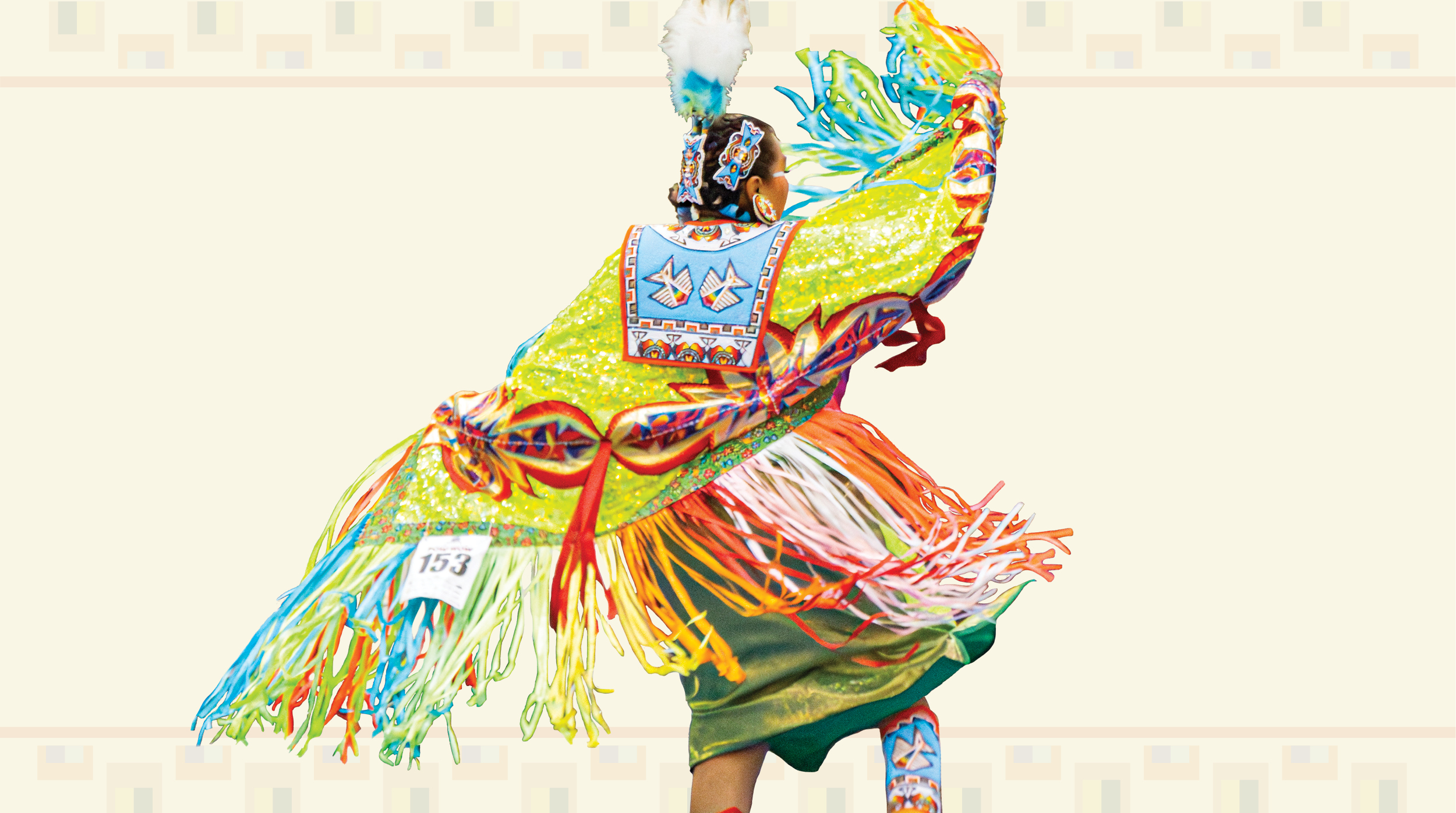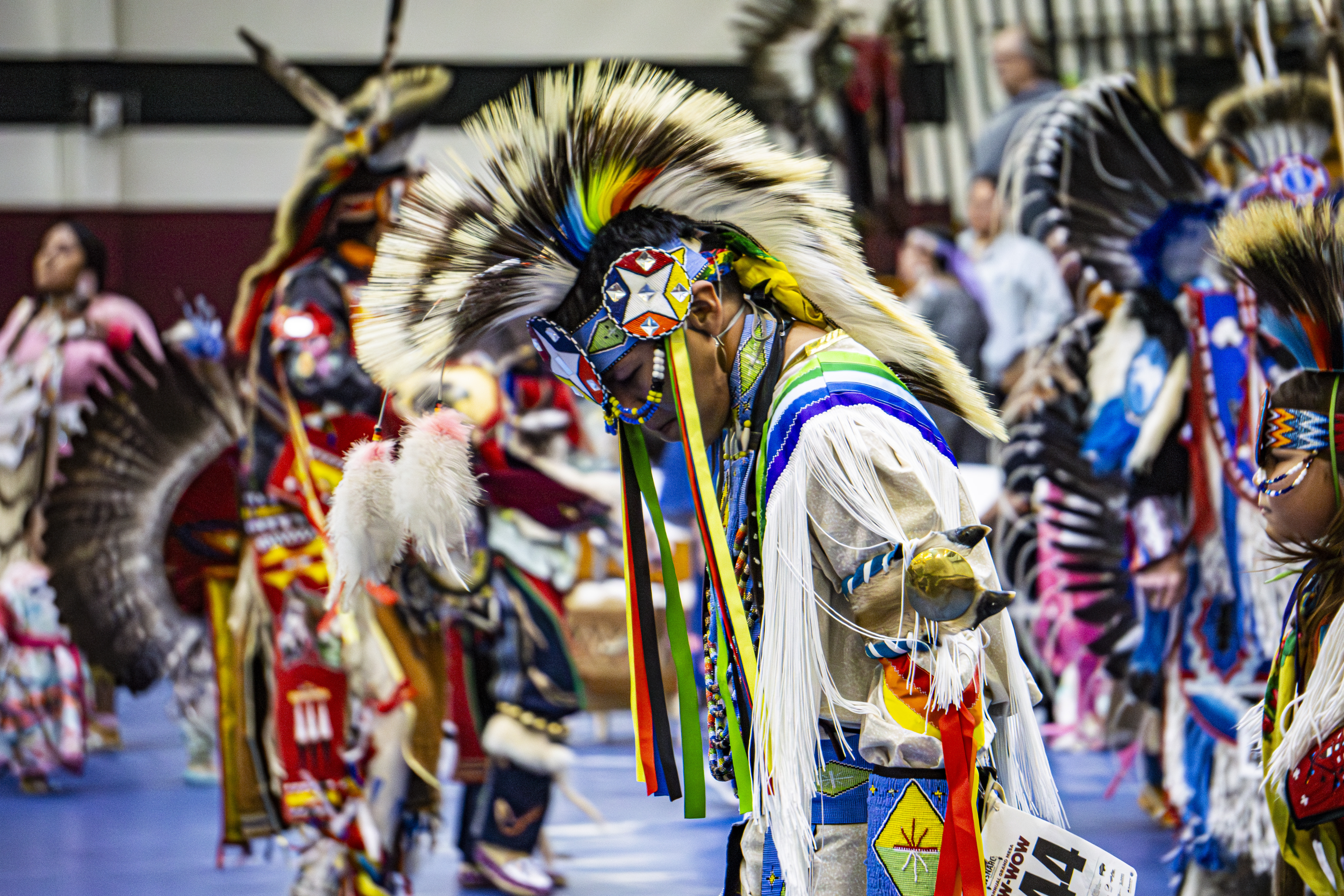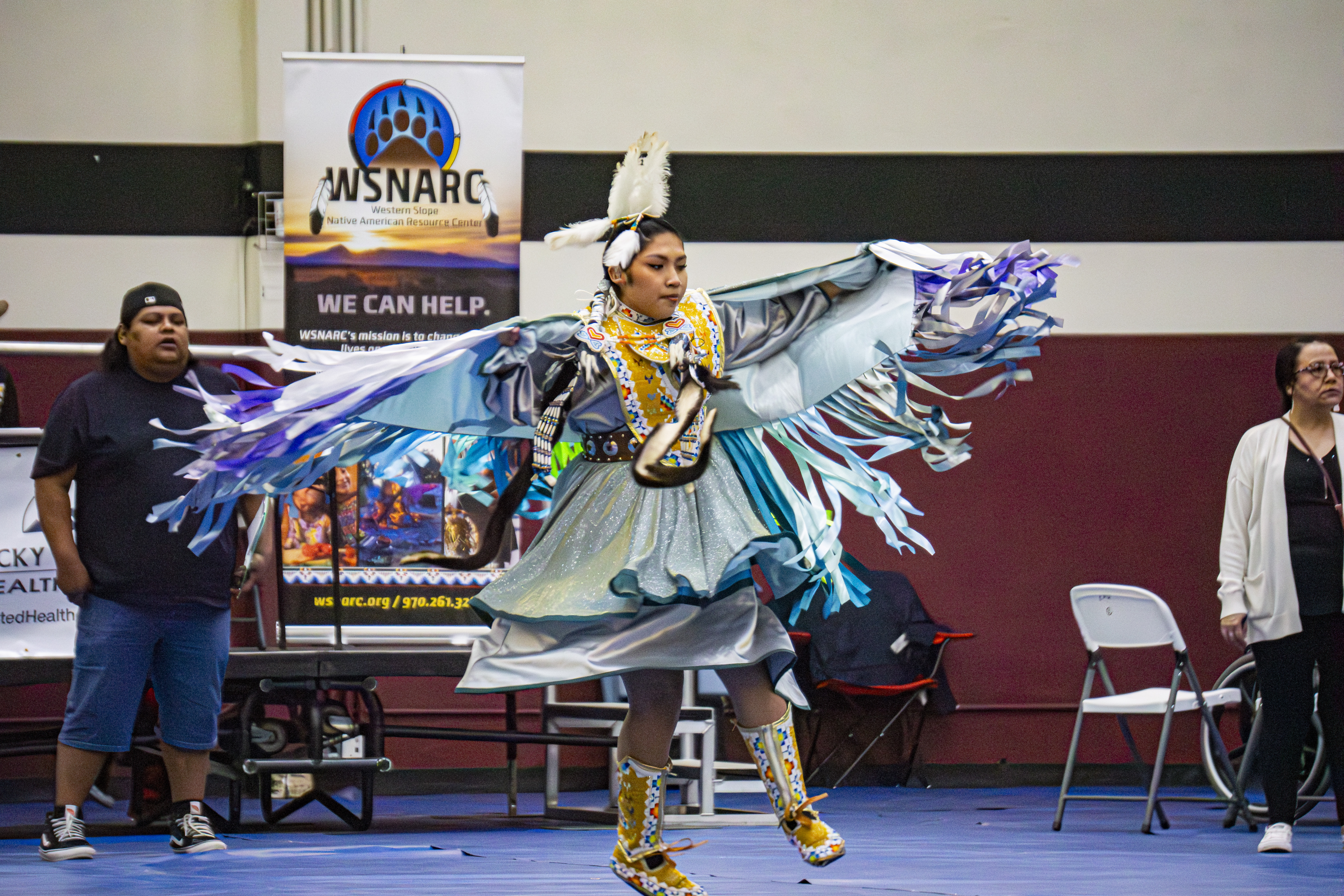Inaugural Grand Mesa Powwow Shines Spotlight on Native American Culture
Powwows have always been a significant cultural gathering for Native American communities. Several modern-day powwows are an opportunity for Indigenous people from all tribal backgrounds to come together, share experiences, reflect on time-honored traditions and educate future generations.
Two federally recognized tribes in Colorado — the Ute Mountain Ute Tribe and the Southern Ute Indian Tribe — have continued to preserve their ancestral traditions and heritage by introducing the Grand Mesa Powwow.
“We want to bring our culture back to Mesa County. We want people to know who we are now and who we were then,”said Monique Terpstra, executive director of the Western Slope Native American Resource Center (WSNARC).
The inaugural Grand Mesa Powwow transformed the atmosphere of CMU’s Brownson Arena with vibrant energy and a colorful display of Native pride. Hosted by WSNARC and Colorado Mesa University’s Native American Student Association (NASA), the three-day event drew participants from as far as Canada and Montana.
The Grammy Award-winning Black Lodge Singers from the Blackfoot Nation served as host drum — their rhythmic beats echoed throughout the arena.
The Grand Mesa Powwow was a competition-style powwow with over $25,000 in prize money awarded to the best dancers, drummers and drum crew. Attendees from over 10 tribes participated.
CMU NASA President Sadie Kelley danced for Women’s Fancy Shawl, a dance she’s participated in since she was a child. Women’s Fancy Shawl is elegant, smooth and meant to resemble a butterfly in flight. Dancers must keep on beat with the drum while incorporating fast footwork, spins and hops.
“This powwow was the third powwow I have danced in since COVID and moving away for college. It was great to dance again. It made me feel happy and gave me that extra motivation and push to finish off my last semester,” said Kelley.
Powwow participants wore intricate regalia, which is commonly decorated with elements of elaborate beadwork on leather or fabric appliqué. Kelley has made her own regalia since childhood. The regalia she wore for Women’s Fancy Shawl was her first fully beaded set, designed with geometrics and family designs to represent different parts of her multi-tribal identity, which includes Oneida, Muscogee Creek, Kiowa, Comanche, Shoshone-Paiute and Cherokee.
“I wanted to incorporate as much as I could in my beadwork. Each person’s beadwork tells a different story — what tribe they are, where they come from and their personal stories,” said Kelley.
Kelley spoke passionately about the significance of the powwow and said that for her, the powwow was a great opportunity to introduce people to Native culture, meet relatives and feel closer to home while away at college.
“I got to bring my teammates and coach from the Women’s Golf Team to their first-ever powwow and let them experience a culture they have never experienced before. I also got to meet relatives on my Kiowa side. It was great to connect with them and have a sense of home while being away from my community,” said Kelley.
The choice to hold the powwow on the CMU campus highlights a continuous partnership between CMU and the Ute Tribes. This partnership was strengthened during last October’s Tri-Ute meeting, where three Ute tribes convened including the Ute Mountain Ute Tribe, Southern Ute Indian Tribe and the Ute Indian Tribe of the Unitah and Ouray Reservation. CMU’s central location and proximity to the historical Ute Council Tree, the original meeting ground for Ute tribes, made the campus an ideal gathering place. The collaboration includes CMU’s Native American Student Association, which ensures tribal voices and traditions are respected and integrated into the campus community.
There are plans for the Grand Mesa Powwow to become an annual event. Kelley hopes community members know they’re welcomed and encouraged to attend future powwows.
“Anyone is welcome to go because it’s a great learning opportunity. Everyone should educate themselves and attend to learn the history of the Indigenous people that occupy the land and surrounding areas. They’re still here, thriving and living just like everyone else,” said Kelley.
The Grand Mesa Powwow was a representation of resilience and a vibrant reminder of the heritage that continues to thrive in Native American communities across the nation. It marked the beginning of an annual tradition, which reaffirms the enduring presence and cultural richness of Native American communities in Colorado.





